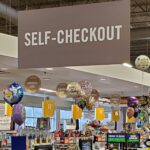Coupon users tend to watch their totals at the register like a hawk, to ensure every one of their coupons scans properly. But how closely do you watch your running total as your actual purchases are scanned? A new study suggests we all ought to be watching a lot more closely – or we could end up paying lots more for our groceries than we should be.
“The Accuracy of Scanned Prices“, which appears in the latest edition of the Journal of Retailing, argues that scanner errors are as prevalent as ever, and not enough is being done about it.
The authors examined 15 years’ worth of data from Washington state, involving nearly a quarter of a million items rung up at retail stores that use price scanning systems. The overall error rate, they found, was 4.08%. The good news is that more of those errors were undercharges (2.33%) than overcharges (1.75%). Another piece of good news, is that those percentages show an improvement from 15 years ago.
But now the bad news. “Improvement of error rates is not the same as the elimination of such errors,” the study notes. After all, the authors point out, before bar code scanner technology was implemented, the historical error rate at the point of sale was a mere 0.7%.
Plus, the researchers found that the average dollar amount of overcharges is on the rise, surpassing the rate of undercharges. In other words, you may be undercharged a bit here and there, but when you’re overcharged, you’re really overcharged. “Thus,” the researchers write, “it appears that overcharges have become more severe despite the percentage of mistakes declining.”
They also found that when items are on sale, overcharges are more prevalent than undercharges. So precisely when you think you’re getting a good deal, you may be at most risk for not getting a deal at all.
So what can be done about this troubling trend? Someone should call the feds!
Or not. The authors point out that the U.S. Federal Trade Commission has not conducted a study on the accuracy of scanned prices since 1998. The agency has largely left it to local governments, some of whom are more diligent about checking retailers’ price accuracy than others. California has been particularly aggressive about auditing retailers at the point of sale, and fining the offenders. Just last week, Whole Foods was fined $800,000 for overcharging customers in three Southern California cities. Safeway agreed to pay $2.25 million to settle a lawsuit involving overcharges in the San Francisco area earlier this year, California’s Fresh & Easy was fined more than $800,000 last year, and Ralphs was fined $1.1 million for pricing errors in 2012.
But what about consumers whose local officials are not so aggressive about double-checking retailers’ prices? There are some things you can do to protect yourself. Keep an especially close eye on produce, bread and “impulse buy” items displayed at the checkout. The study says those items are among those for which you’re most likely to be overcharged.
The researchers also suggest that you learn whether your stores offer a price guarantee. All of those fined California stores were required to implement a program in which they give any overcharged customer the mistakenly-priced item for free. “We strongly advise consumers to ask about such policies when errors are discovered,” the authors write.
If you live in a more affluent neighborhood, keep a close eye on your total. The researchers found that overcharges were more prevalent in higher-income areas. The researchers suggest it may not be entirely accidental: “this result may imply that retailers might be purposely managing errors such that stores had fewer overcharges in areas where residents were more sensitive to prices and more in areas where consumers might be less price-sensitive.”
Finally, the study disputes some retailers’ contention that it all evens out in the end: if you accidentally get overcharged on one or two items today, after all, you may get undercharged for an item or two the next time. The authors dismiss that argument, saying that most undercharges are simply old sale prices that were mistakenly extended. “Undercharges may simply be a creative fiction,” they write, “as many undercharges simply indicate that store staff were slow to remove expired shelf tags” and “there is no economic value given to the customer in terms of real dollars.”
In the end, the researchers argue that, given the widespread use of bar codes and price scanner systems, “the testing of accuracy of scanned prices has not kept pace. If these systems are not as accurate as promised, then implications related to their operational efficiency, profitability and price management for retailers must be called into question.” And as new technology, like GS1 bar codes and RF tags are implemented, testing is more important than ever.
And if the FTC isn’t going to do it, the study concludes, someone should. Otherwise it’s simply buyer beware. So be sure to keep a close eye on your totals, just in case.















Back when I first began couponing I realized that prior to my coupon days where I now have totals ready before checkout, I was overcharged more often than I realized. I really really could not believe just how many mistakes I’d let slip by before. Amazing.
PS: Good post, Bill.
Thanks Ivy! I think couponers are probably better about watching their totals than others, but it’s easy to forget to watch as the items are rung up and not just as the coupons are deducted.
U.S. should get Scanning Code of Practice like Canada.
Exactly! The study actually mentions that – for those who aren’t familiar with how Canada does it:
“The Retail Council of Canada created a voluntary program called the Scanner Price Accuracy Voluntary Code. This code protects consumers for up to $10 per scanner overcharge identified. A similar code could be developed in the U.S. to protect consumers against overcharges, even though many retailers offer their own scanner accuracy guarantee policies.”